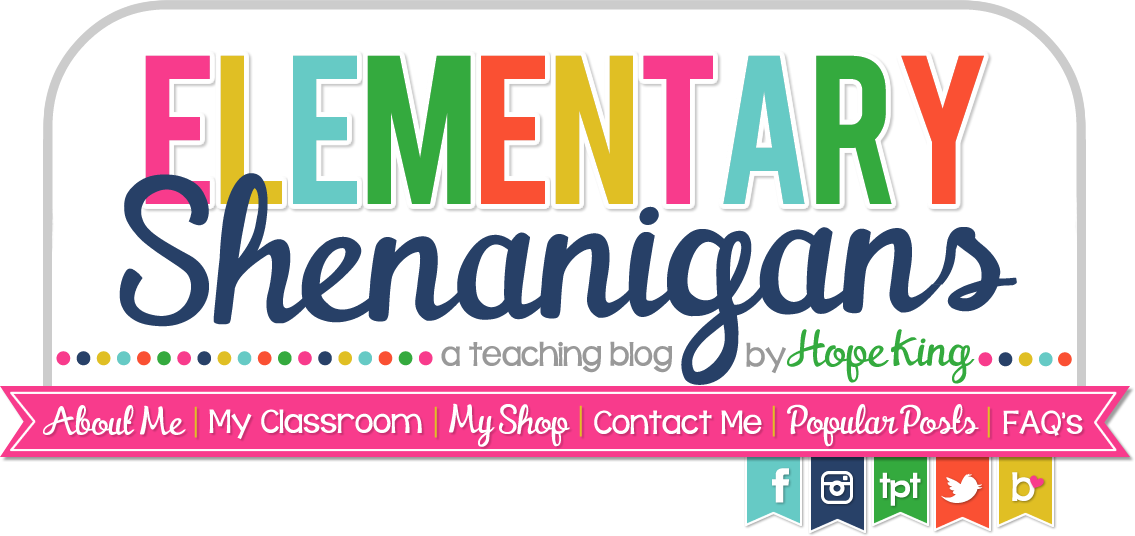Author's purpose is definitely not the most exciting thing that we study, and it can also pose challenges when working with complex texts in 5th grade. So I knew a little room transformation combined with a game would be the best way to teach this skill. And then some genius had to show out and invent the game Pie Face. I will forever be in debt to that individual! So how does it all go down? Check it out below....
( I will also link all of my resources at the bottom of this post!)
Welcome to the Get PIE'ED Bakery where author's purpose is our focus...and well, that may or may not come with a few pies in the face.
I begin by teaching the patterns for each of the five different purposes that we learn. Teaching students to identify patterns allows them to better analyze a text to find the author's intention rather than just trying to pinpoint or use process of elimination to make a guess. Those two things will only make them appear that they understand the skill. However, if we really want for our students to use and apply the skill, helping them identify patterns during an analysis will give them more perspective when reading as they begin to see how the author views their subject. So how do I teach the pattens?
P = Persuade (We look for opinions supported with facts. We analyze the two separately and then together to see how the author views the subject. Then we use the information provided as well as the credibility of the source to create our own opinions.)
I = Inform (We look for facts organized by a text structure. We question first what is the author informing us about, and then how are they organizing their information? Are they informing us about problems and solutions, causes and effects, etc.?)
E = Entertain (We don't just simply look for dialogue. Rather, we focus on the organization. Most pieces meant to entertain will be organized into a storyline. Therefore we find evidence of a plot.)
E = Explain (Explain means to teach. Therefore we look for evidence of steps teaching how to do something or how something happens. This evidence may either be given implicitly or explicitly.)
D = Describe (This one is tricky because this will be the students choice for most writing simply because they think that everything describes something. Their definition of description is simply facts. However, to identify something as a description, they should be looking for evidence of imagery and descriptive language.)
Once the instruction is done, it's time for the application. I provide the students with 15 different passages.You can either write your own or simply look for passages online. The student begins with the first passage. They read and look for patterns and textual evidence to identify the purpose of the writing.
Once they have identified the purpose, they consult with their group. I group the students up into 4-5 students. They must each state what they think the purpose of the passage is as well as textual evidence to support their conclusion. The group works through any misconceptions to give the passage its final purpose. Once they have done that, they bake their first passage pie by placing their passage into the correct pie tin. I have them labeled the five different purposes they working with.
After they place their passage into the correct tin (AKA their purpose pie has been baked), they get to follow the traditions of the bakery and play a round of Pie Face. Prior to this, I give very specific rules. Here are some that make this work like a charm:
1) Only place a small amount of whipped cream onto the game. I even model this for the students. I also make them take off their hats prior to playing because the whipped cream does tend to fly.
2) As soon as a student has been pied, that student immediately cleans up with the wet wipes. The others, wipe the game down and clean up any whipped cream on the table cloth.
(The students know that they will lose points on the activity if I see evidence of whipped cream anywhere unless they are in the middle of the game).
3) To keep them from running to the trashcan every two seconds, I place a bin in the middle of their table. They dispose all of the dirty cloths into that bin.
Then...I just let go and let God! Lol! This is my letting go face!
Seriously though, I have never had one issue with this lesson or game. Once the expectations are set, I am very consistent. The students know exactly what I expect which is key to making something like this successful.
Here are some of my favorite action shots from the lesson.
Once they complete their round, they begin the next passage. The same procedures continue for all passages.
Another option is to have the students identify the purpose of each passage first. Then the group confirms, bakes, and plays the game. This helps the instructional/working time to remain nice and quiet.
The look on their faces says it all. That right there is something that a worksheet will never provide.
....oh and the anticipation that this game brings...
That's all folks. That's all there is to it! This will definitely go down as one of your students all time favorite memories.
Here are some of the resources that you may choose to purchase for this lesson. However, the game is the only thing that you truly need! You can click on any of the pictures to find the resource online.























No comments:
Post a Comment